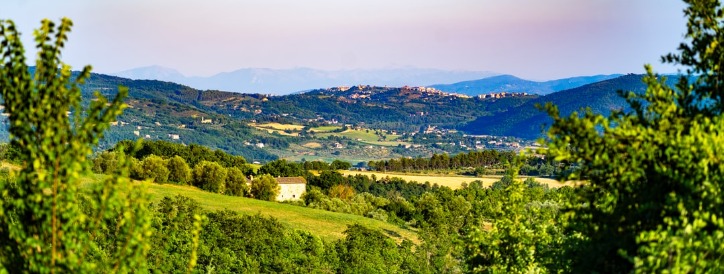Provinces: Perugia, Terni
Another region that does not have any beachfront property as this region does not touch any part of the seas that surround Italy. This area is mainly mountainous and hilly and offers a landscape rich in woods and water resources.
This region is largely untouched by large-scale tourism and is located between Tuscany and Rome. You can find some great deals in this area if you take time to explore and discover the countryside and the towns along the way.
Perugia, Italy – Travel and Tourism
Perugia is the capital of Umbria. The town of Perugia is a splendid hill town and key center for Umbrian and Tuscan art.
Walking the town’s main square, the Piazza IV Novembre, take time to visit the National Gallery in the Palazzo dei Priori, the Gothic cathedral and the 13th-century marble and bronze Fontana Maggiore.
Todi, Italy – Travel and Tourism
Todi is a medieval town built in the hills and located in the southern part of Umbria. Todi has a grand collection of twisting narrow streets, churches and squares.
Assisi, Italy – Travel and Tourism
Assisi is a well-preserved medieval town that’s, after the Vatican, Italy’s second-most-popular religious-pilgrimage destination.
Situated on a hilltop it was the abode of St. Francis, the leader and founder of the Franciscan order of friars. The town was hit by an earthquake in 1997 but, much of the damage done has since been repaired and rebuilt.
Norcia, Italy – Travel and Tourism
Norcia is famous as the birthplace of St.Benedict, the founder of the Benedictine order. Among the sights is the Gothic church of St. Benedict, built in the shape of a Latin cross, an example of Renaissance architecture.
Trevi, Italy – Travel and Tourism
Trevi is also a hill town and is very characteristic of most of the medieval towns in Umbria. If you visit this area you may want to visit the 12th-century church of S. Emiliano, then the church of S. Francesco and onto the Pinacoteca in the Townhall. You will find many works by Pinturicchio and Spagna.
